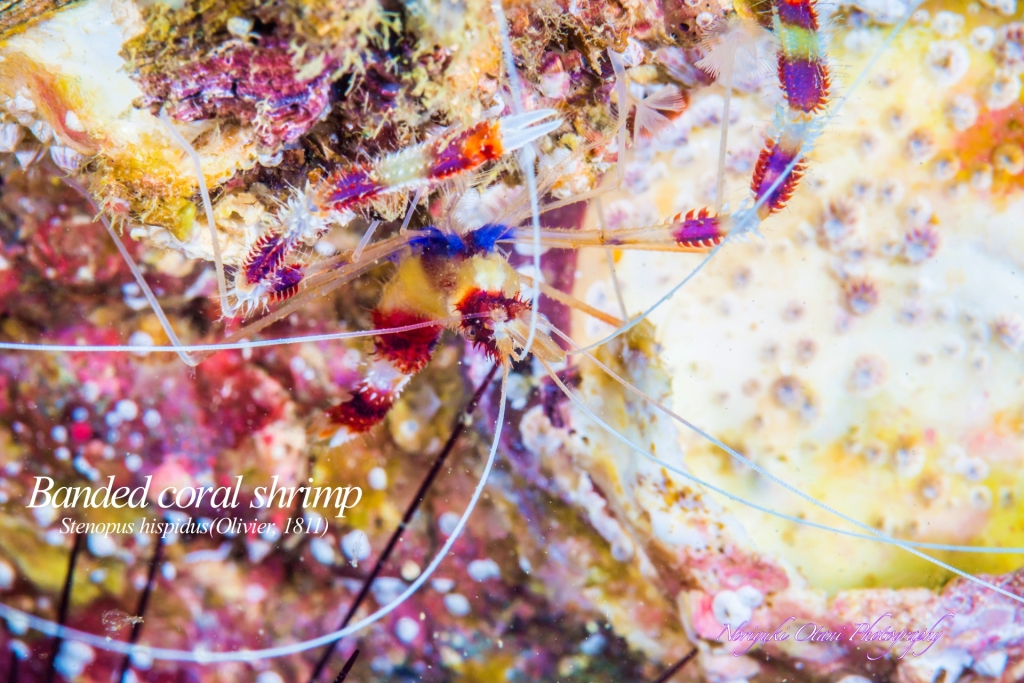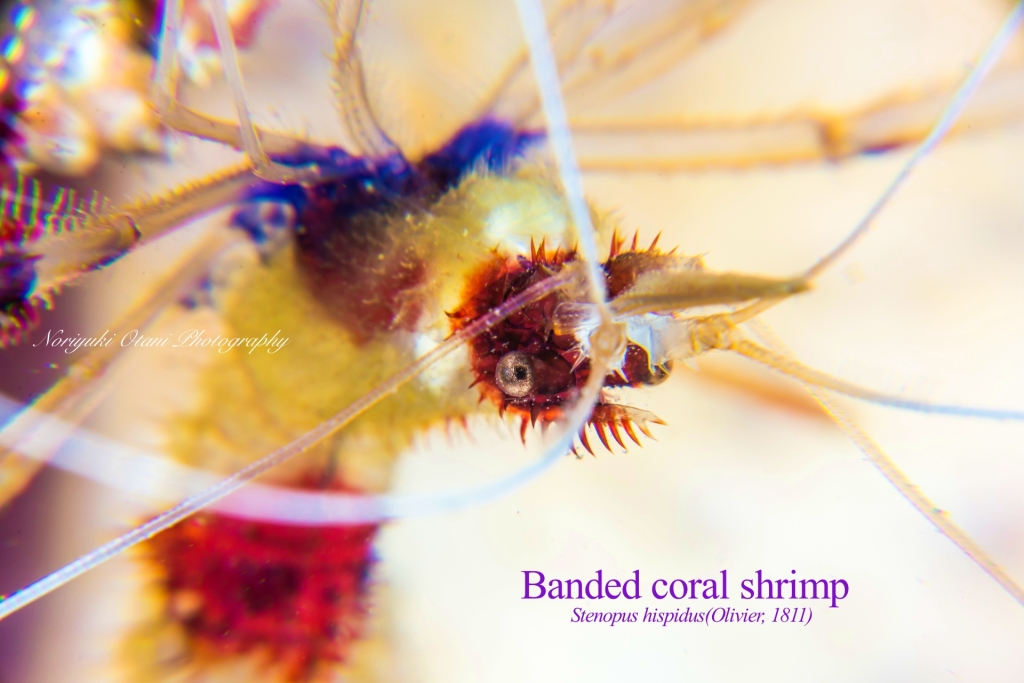Banded Coral Shrimp
Stenopus hispidus (Olivier, 1811)

One stone is one of the popular diving points in Owase. It is a large monolith rock reef. Many kinds of soft coral are overgrown, and a flock of cardinalfish and colorful Anthias fishes entertain the diver’s eyes.
There are large and small cracks in this rock reef, and you can see shrimp and crabs.

Banded coral shrimp is common shrimp in such rock holes.
Beautifully colored shrimp decorated with red and white bands.
The Japanese name for Banded coral shrimp is Otohime-Ebi. Otohime is the name of a beautiful princess who lives in a fairy tale undersea palace. Ebi is shrimp. Contrary to its name, it is diligent and is known for cleaning large fish parasites.








